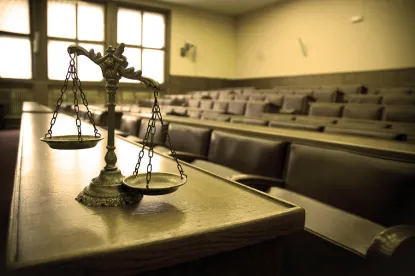The Art of Jury Persuasion
During a trial, a litigator cannot rest on the merits of their case alone. Sure, the evidence may overwhelmingly be in their favor, but does the jury see it the same way? Is the evidence being explained to the juror in a way that they can synthesize? Is the evidence being presented in a way that the jury will remember during deliberations? These are just some of the aspects that an attorney needs to consider.
Persuading a jury is no easy task; it is critical to put in the extra work — persuading a jury is an artform that takes years to hone and perfect. By spending time and focusing on this craft, not only can a litigator get slam dunk results on strong cases, but can even give their weaker cases a fighting chance in the courtroom.
Telling a Better Story
According to Dr. Christina Marinakis, IMS Consulting & Expert Services Jury Consulting Advisor, one of the first aspects that an attorney should focus on when it comes to improving their jury persuasion skills is storytelling. She states: “Jurors can’t be expected to remember mountains of information over a long period of time — mental capacity is limited, but we know from social science research that encoding and recall increases ten-fold when information is provided to people in the form of stories.” During a trial, jurors are presented with copious amounts of evidence. They need to learn all the facts of a case and, perhaps more importantly, they need to remember these facts. Trials can last days or even weeks after an attorney first presents their information to the jury. This is why it is crucial to present a case in a way that the jury will identify with.
To become a better and more memorable storyteller, an attorney should use the evidence of their case to weave together a narrative that a juror could never forget. They should make their story compelling. Additionally, to make the evidence easier to understand, they should tie it to specific themes. Consider this: people listening to long lists of words usually can only recall about less than a third of the list. Yet when the words are grouped by subject matter, the recall rate jumps close to 70 percent. Evidence is the same way. An attorney can tie pieces of evidence to a specific theme within the story, creating a higher likelihood that a juror would recall that piece of information. Dr. Marinakis states that overall, “Jurors will never remember all of the evidence, but if they remember the story, they can effectively argue your position during deliberations.”
Understanding How the Juror Thinks
When presenting evidence to jurors at a trial, it is imperative for an attorney to understand how they learn. Learning requires four steps in total — attention, encoding, storage, and retrieval. The first step in effectively getting a juror to learn is to get them to pay attention and listen to what is being said. This can be done in a number of ways, and in many ways mirrors the job of a teacher. For example, an attorney could use mixed media to grab a juror’s attention, or perhaps they could spark interest by telling an engaging story.
After the juror is listening, the next step is to encode this information. Once this information is assimilated, they need to store it until the deliberations. The final step in the learning process is to be able to recall and repeat the information. This is where themes can truly make an impact. By presenting a juror with themes, it makes it much easier for them to remember and repeat evidence. The best themes are short and memorable. An attorney asks jurors to take in significant amounts of information during a trial, so the learning process needs to be easy and engaging. Techniques such as alliteration, rhyming, and using colloquial phrases can be quite helpful in this area.
Making the Most Out of Voir Dire
Voir dire is a critical part of any trial. However, an attorney must understand that during voir dire, the prospective members of the jury have held their beliefs for years, potentially even from the time they were young children. There are too many attorneys focused solely on creating a strong first impression who spend voir dire trying to precondition the jury. And though both preconditioning and suggestive questioning could potentially have a minor impact on shaping a juror’s future decisions, the power of an attorney to create influence at this stage is rather limited.
The ultimate goal of the litigator is to persuade the jury to provide a favorable verdict. Yet the verdict happens weeks following voir dire. There are going to be very few jurors — if any at all — who remember what an attorney said during voir dire. In order to get the most out of voir dire, an attorney should not be focused on getting a prospective juror to abandon their beliefs or put aside a bias. Rather, they should be focused on highlighting their bias and removing them from the jury pool. “Thus, we recommend limiting questions that are aimed to pre-condition, and focusing instead on those that reveal juror bias. The latter is going to give you more bang for the buck, because every cause challenge is the equivalent to an extra peremptory.” Dr. Marinakis continues, “Focus your voir dire on eliciting negative reactions about your client so you can maximize cause challenges. You’ll have plenty of time to win the jury over in opening statements and the rest of the trial.”
Ultimately, jury persuasion is an artform that blends the legal world with human psychology. To become a more impactful attorney and litigator with a better win-loss ratio, this artform should be honed. Whether someone needs to better their storytelling or look for dynamic new ways to grab a juror’s attention, improving jury persuasion skills can go a long way and make a strong legal mind a formidable presence in the courtroom.





 />i
/>i

